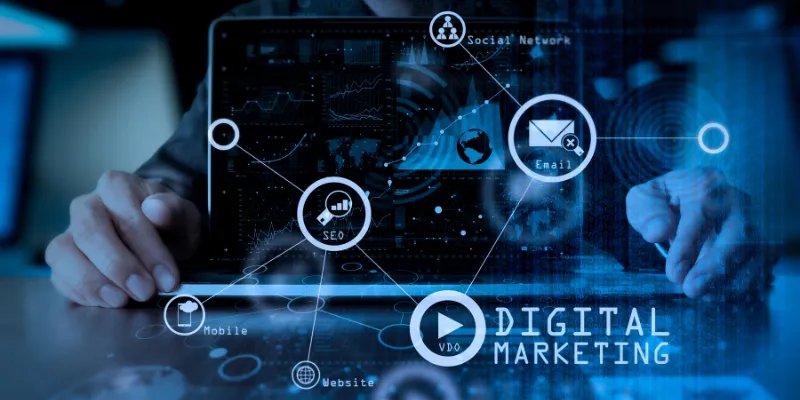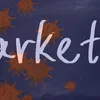Top trends that can drive digital marketing strategy in the COVID-19 world
Here are some of the online marketing trends that have emerged in the ecommerce industry.

The ongoing pandemic has drastically changed the way businesses operate. Due to social distancing, lockdown and restricted movement, there has been a sudden shift to digital platforms.
COVID-19 has pushed digital adoption by 5x in the last three months, even in industries which were previously rigid and shy. Companies have realised the need to adapt quickly to this new normal for all their functions.
One of the key areas which digitisation is bringing a revolution is marketing and communication. Almost 90 percent of businesses are reassessing and reviewing their marketing budgets. It is now more important for them to capitalise on new methods and tools. A good digital marketing strategy with high ROI is the need of the hour.
Here are some of the trends that have emerged in the ecommerce industry:
Referral marketing for customer acquisition
Today’s consumer is not the one who is driven by flashy ads or discount SMS. They are more inclined to make a decision driven by experiences, theirs or the ones around them.
Players, especially in segments like e-grocery, ed-tech, FMCG, and fashion/retail, are using referral marketing to get customer interest.
Micro-influencer-led campaigns
Companies have realised that celebrities don’t do the trick anymore. Customers refer to the experiences of their peers. Moreover, majority players in the ecommerce segment don’t have the budget to engage with celebrity influencers. Hence, there is a shift to do subtle marketing on social media through micro-influencers or focused group influencers.
For example, if an e-grocery player wants to capture an audience in a specific area in a city, identifying and engaging with housewives/mothers or housing society president of one of the largest housing society will enable them to establish a better connect with potential customers from the area.
While engaging with influencers, companies should focus more on creating advocacy rather than advertising their product. This can be done through intelligent use of content in their campaigns.
Using the “in” social media platform
Email marketing doesn’t work the same wonder, though there are many social networking platforms. The flavour of the season keeps changing and companies need to constantly evaluate on which is the ideal platform. They need to be wary of which channel to use for which audience and at what time. They also have to experiment with tools and tactics on each of these platforms.
Recent brand campaigns captured by ‘Mad Over Marketing’ clearly indicate that unless brands are creative with the use of social media, the essence of their message is quite lost.
In current times, staying topical with your campaigns is also striking as it immediately captures the attention of the audience and also creates a more natural consumer engagement opportunity for the brand.
Using native linguistic and not just local language
Brands have been using regional language to connect with consumers, but what is going to be different is using native dialect. For example, in Karnataka, the Kannada spoken in Bengaluru is different from the one in Mysore/Dharwad/Huballi/Belgaum. You go further north, Mangaluru/Udupi has a language of their own – Tulu. This phenomenon is across states in India.
Hence, to establish a closer connection with the consumer, companies are now creating their interface in local native linguistic. This is also opening a new market potential for brands –consumers who only speak this language and are not versed with English or Hindi.
Using advanced big data to customise consumer outreach
Data analytics has been used by companies for quite some time now. But now, the shift has been towards advanced big data analytics converged with artificial intelligence. Companies in the ecommerce segment have been using these tools to gather insights about consumer behaviour, and then further use technology to customise content and marketing for each customer.
In simple words, when a customer visits the application or website, he sees what is relevant to him, basis his previous engagement with the company. Not just this, now companies also play with colour, interface, layout, and 3D graphics to further personalise the content.
Investing in creating interesting content
Content is the king. In fact, more and more marketers are fast realising that content plays a key role in getting the imagination of customers.
Not only are marketers investing in hiring people with a creative bend of mind to help them. They are even investing in making content as local as possible. They are also using different mediums like plain text to art to animation to video etc, and trying to make the content as interesting as possible
Enabling a social shoppe experience
Ecommerce companies have been providing exactly this for a while. But now, it is also crucial for traditional brands to ensure they have a social shopping presence. Companies are either creating their own unique online presence or partnering with existing ecommerce platforms.
As we move forward, it is will crucial for companies to establish some kind of distinct brand identity on social platforms so that they can capture maximum consumer interest.
Other than these, ecommerce companies continue to experiment with blockchain, SEO/PPC optimisation, and mobile integration to connect with their target audience.
A recent study shows conversion rates of SEOs have increased by about 14 times to that of traditional methods. PPC, on the other hand, has been the favourite channel of marketers for a while now as it has a higher conversion rate. In the simplest bit, having an easy to use interface has also worked wonders for brands and will continue to do so in the future.
Edited by Kanishk Singh
(Disclaimer: The views and opinions expressed in this article are those of the author and do not necessarily reflect the views of YourStory.)









